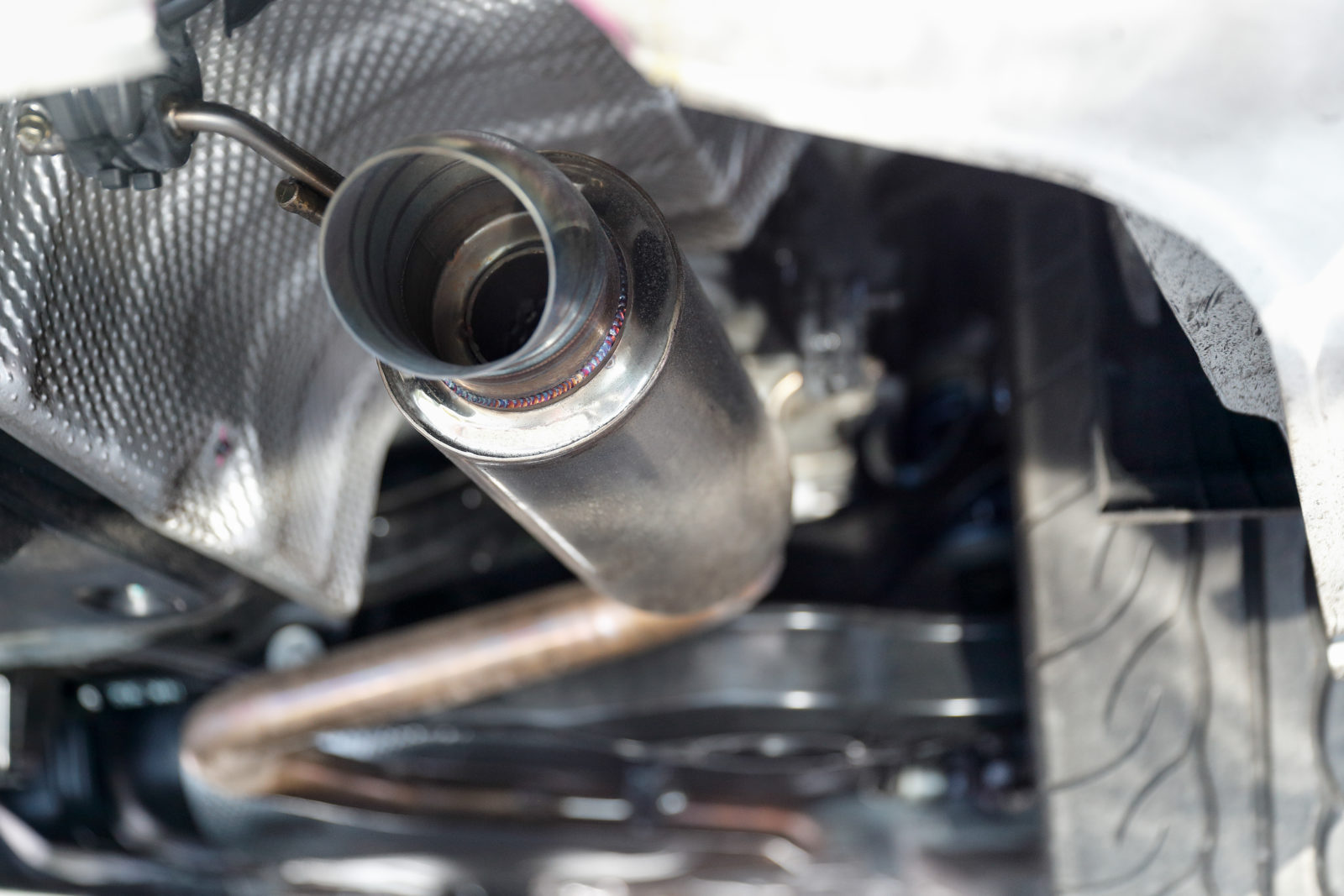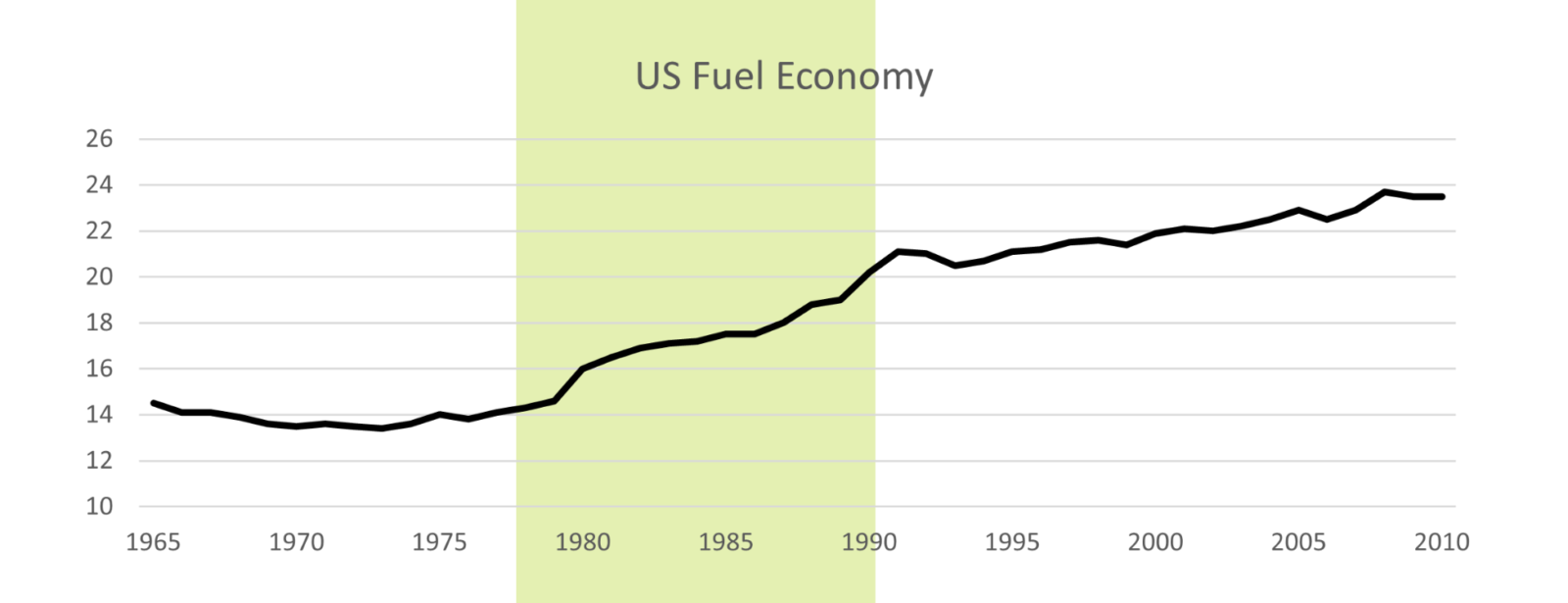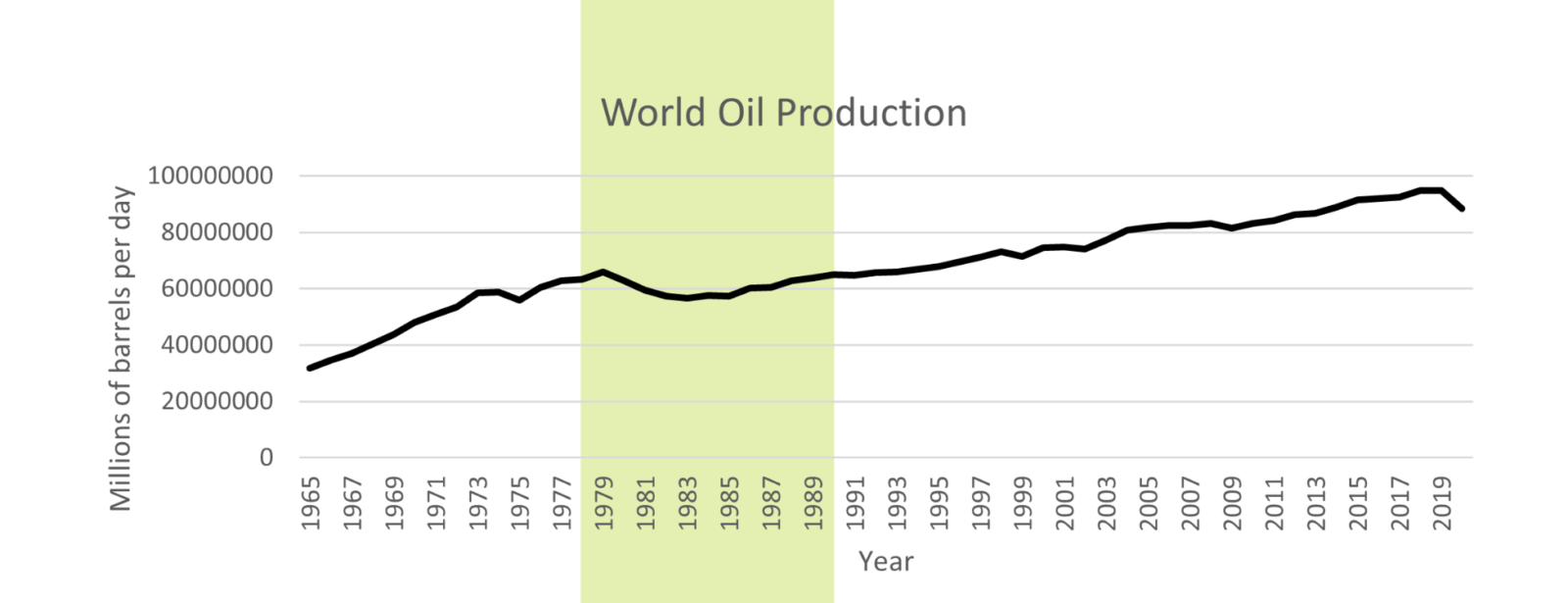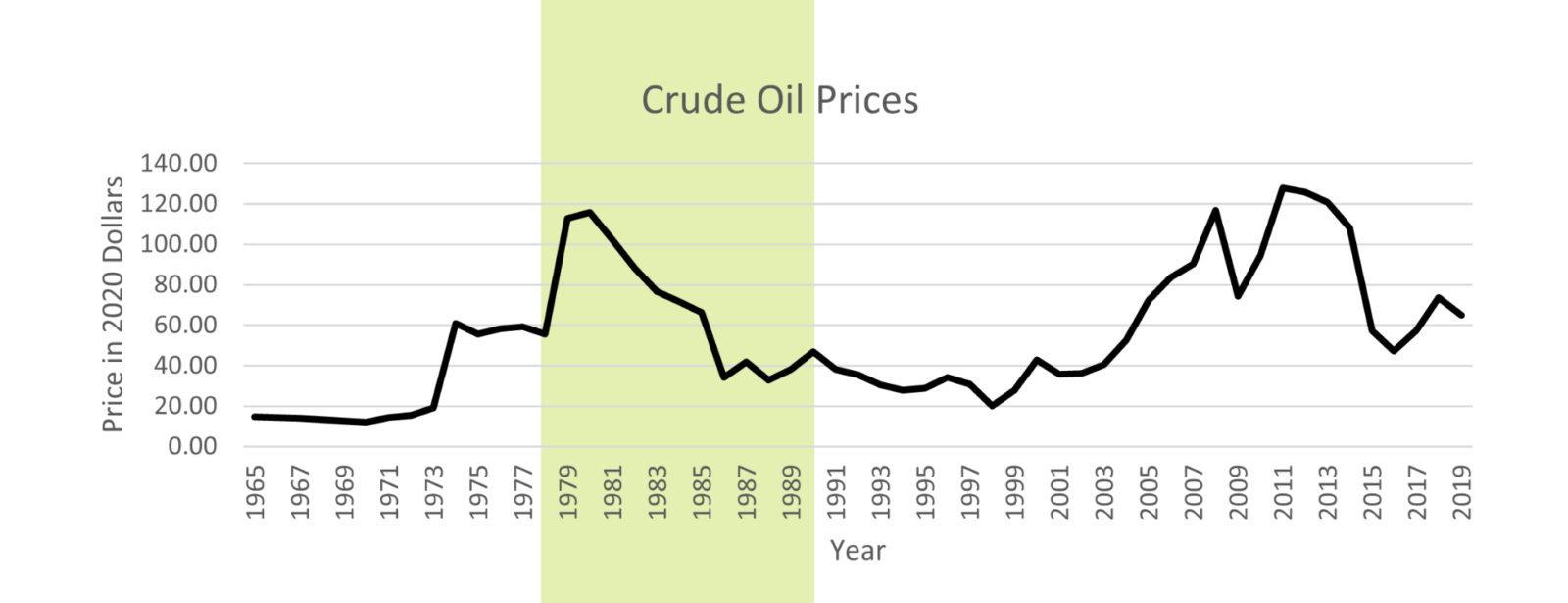For evidence of how Rapid Substitution works, we can look back to the mid-1970s, when the introduction of Federal CAFE (Corporate Average Fuel Economy) standards for vehicle efficiency contributed to a sharp decline in oil demand that resulted in much lower oil prices for almost a decade.
First implemented in 1978 in response to declining U.S. control of oil markets to the OPEC cartel (and rising oil prices), CAFE standards were initially intended to double the average fuel economy of the new passenger vehicle fleet, a gradual process to be implemented over a roughly twelve-year period.
In the three graphs below, the green column highlights the twelve-year period that followed the introduction of CAFE standards, demonstrating the close correlation between changes in the efficiency of the US vehicle fleet, global oil production, and the price of oil.


Source: USDOT

Source: EIA (for period 1973-2017), Hook, Michael (for period 1965-1973)

Source: BP Statistical Review of World Energy 2021
By regulating for more efficient vehicles, and therefore lowering overall fuel consumption, CAFE standards eventually helped drop oil demand (and production) by about twenty percent (20%).
During the same period, oil prices slowly fell from a high of $120 per barrel in 1980 to below $40 per barrel (inflation adjusted), where they remained until the early 2000s.
In other words, a long-term, twenty-percent (20%) reduction in demand for oil was accompanied by a consistent seventy-percent (70%) drop in the price of oil. It is worth noting that during the first years of the new CAFE standards, OPEC curtailed production in an effort to defend higher prices, a strategy the cartel was eventually forced to abandon in the mid-1980s, resulting in prices that briefly fell below $24 per barrel.
Declining production of oil during this period has also been attributed to economic recession. This would seem an inadequate explanation considering this period also saw economic boom times and that the recession of the early 1980’s was relatively short-lived. A long-term, gradual improvement in the American fleet’s efficiency would seem a more appropriate explanation for a long-term, gradual depression in oil production matching the same time period as the implementation of CAFE standards.

In 2008, when wallets got tight, people stayed home, causing the demand for oil to crash – and with it the price.

In 2020, the COVID-19 Pandemic rapidly destroyed demand for oil – and caused oil prices to plummet.

The Rapid Substitution team has created an extensive analysis and outline of the Rapid Substitution strategy.
How to Accelerate the Energy Transition